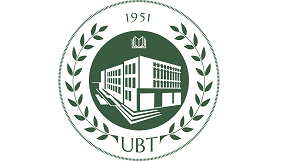ARDIAN MACI1*, LIRI MIHO2
1 Department of Environment and Nature Resources, Faculty of Agriculture and Environment, Agricultural University of Tirana
2 Department of Environment and Nature Resources, Faculty of Agriculture and Environment, Agricultural University of Tirana
* Corresponding author; E-mail: amaci@ubt.edu.al
Download PDF Full-text
Abstract
A healthy soil is initially determined by its fertility, which depends on the interactions of the physical, chemical, and biological soil properties.
Organic farming systems probably emphasize more biological characteristics, which act to create long-term reserves of nutrients for plants, where the use of organic fertilizers is a major factor. A fundamental principle of organic agriculture is to maximize the recycling of nutrients, i.e., returning them to the natural cycle and significantly affecting ecosystem protection. Conventional production systems ensure the direct supply of plants with nutrients taken from the soil through mineral fertilization. This principle does not take much into account the fact that the soil is a living and productive ecosystem. The vision in convectional agriculture is simplified to the sometimes-uncontrolled supply of nutrients from mineral fertilizers with the sole objective of increasing production. Such a practice of conventional agriculture can sometimes be dangerous and with negative consequences on soil quality, water, and biodiversity.
Combining the application of two: organic and conventional production systems together would be a good recommendation for obtaining efficiently high and qualitive crop production in agriculture.
Keywords: soil fertility, soil biological properties, organic fertilization, organic agriculture, conventional agriculture,
fertilization systems.
|
